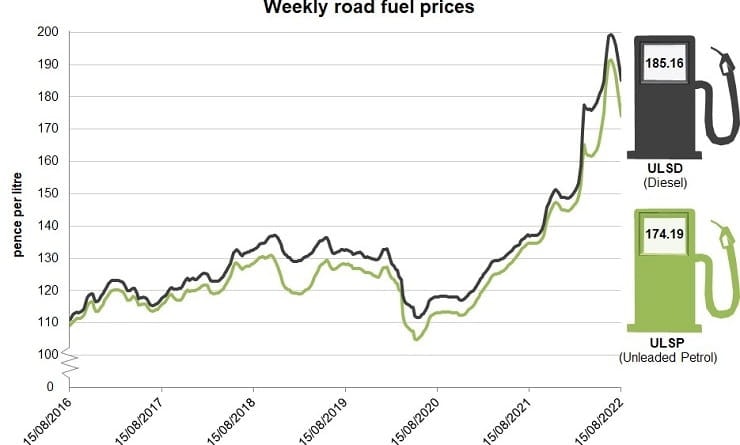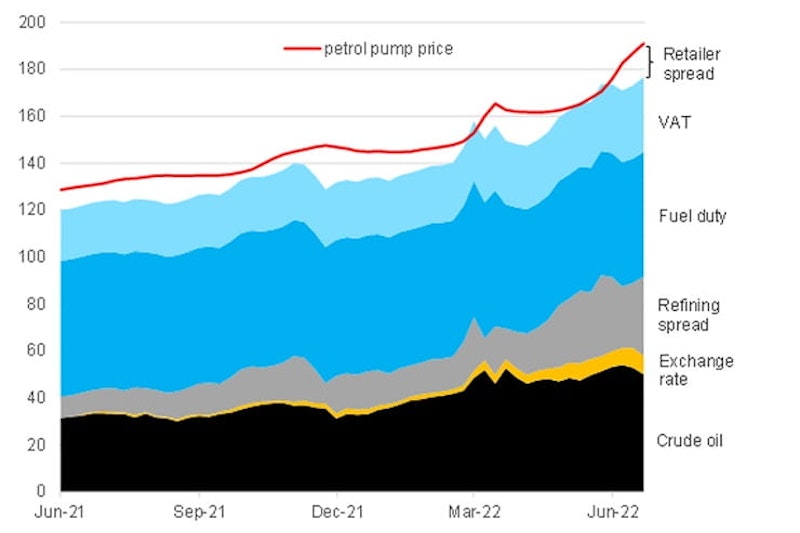Good news! Petrol prices start to slide
By Ben Purvis
Motorcycle Journalist
16.08.2022
New figures released today (16 August 2022) show that the average prices of petrol and diesel at UK forecourts have taken a nosedive – with six consecutive weeks of drops bringing the cost of a litre down to levels not seen since early June.
Right now, the average litre of petrol will set you back 174.19p, still a huge figure but a long way down from the peak of 191.55p seen in early July. Diesel has followed the same pattern, sliding down from a high of 199.22p six weeks ago to 185.16p today. In cash-in-the-pocket terms, it means a typical 15-litre tank of petrol will cost around £2.60 less today than it did a month or so ago.
You only have to look at the graph shown here to see that the recent drop is notable both for its steep downward slope but also for being sustained over a considerable period. Not since the Covid pandemic hit in early 2020 – slamming the brakes on transport and slashing fuel prices as demand dropped way below supply – have we seen such a significant drop. Of course, two years of price rises mean there’s still a long way to go before the near £1-per-litre lows of the pandemic could be reached again, but with prices of home energy leading a huge spike in inflation it’s reassuring to see that some things are getting cheaper.
The price of petrol is generally closely aligned with the cost of crude oil: when oil costs rise, so does petrol. The war in Ukraine caused a huge spike in crude oil prices in March this year, passing $130 per barrel, followed by wild fluctuations between around $100 and $125. This week they’ve dropped further, nearing $90 per barrel. There’s still uncertainty as to where those prices will go next, with some investors banking on a return to $130-per-barrel later in the year and others suggesting the decline will continue.
Of course, there’s a delay before any change in the price of crude oil is passed on to consumers at petrol pumps, and other costs are added along the way in the form of refining and transporting the fuel. Those costs have been increasing, forcing forecourt prices to rise more than crude oil costs. Last month, the Competition and Markets Authority (CMA) conducted a review to see whether the 5p-per-litre fuel tax cut announced in the Spring Budget was being passed on to customers. It revealed that ‘refining spread’ – the difference between crude oil prices and the wholesale petrol prices that forecourts have to pay – has been growing. In June 2021, crude oil contributed to around 30p per litre of the cost of fuel at the forecourt, with refining spread adding about 10p. A year later, crude oil accounted for about 50p per litre while refining spread contributed 35p to the total. The CMA has since launched a study into that growing gap between oil prices and wholesale petrol costs to see whether there are legitimate reasons for the growth in refining spread, which accounts for over 40% of the rise in fuel prices, with initial findings due this autumn.
Share on social media:

